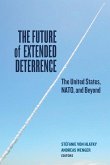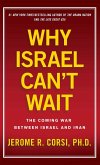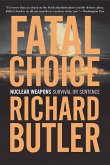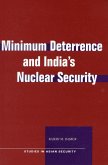Drawn from the third in a series of conferences at the Hoover Institution at Stanford University on the nuclear legacy of the cold war, this report summarizes the contributors' findings on the importance of deterrence, from its critical function in the cold war to its current role. Although deterrence will not disappear, current and future threats to international security will present relatively fewer situations in which nuclear weapons will play the dominant role that they did during the cold war. The authors highlight ways in which deterrence has been shaped by surrounding conditions and circumstances. They look at the prospective reliability of deterrence as a tool of statecraft in the emerging international environment. And they look at how arms control agreements have affected deterrence in the past and how they could do so in the future. In addition, they look at the ongoing debates over "de-alerting" (slowing down the capability for immediate launch and rapid nuclear escalation) and the practical considerations related to verification and compliance.
Reassessing the role of nuclear deterrence Although deterrence will not disappear, current and future threats to international security will present relatively fewer situations in which deterrence, least of all nuclear deterrence, will be the most effective tool of statecraft. Drawn from the third in a series of conferences at the Hoover Institution at Stanford University on the nuclear legacy of the cold war, this report summarizes the contributors' findings on the importance of deterrence, from its critical function in the cold war to its current role. The contributors discuss how, with today's international environment being radically different from that which it was during the cold war, the need is pressing to reassess the role of deterrence in whatever form it may take to meet the challenges of the world as it now exists. This use of American influence--a resource of which deterrence is only one part--can foster expectations that trend toward favoring less reliance on nuclear weapons, not more. This summary report concludes with remarks by George Shultz, Henry Kissinger, Senator Sam Nunn, and Joint Chiefs of Staff chairman Admiral Michael Mullen. CONTRIBUTORS: James Acton, Steve Andreasen, Sidney Drell, Christopher A. Ford, Michael Gerson, James Goodby, David Holloway, Edward Ifft, Raymond Jeanloz, Michael Mazarr, John McLaughlin, Patrick Morgan, George Quester. This summary report also includes remarks by George Shultz, Henry Kissinger, Senator Sam Nunn, and Joint Chiefs of Staff chairman Admiral Michael Mullen.
Reassessing the role of nuclear deterrence Although deterrence will not disappear, current and future threats to international security will present relatively fewer situations in which deterrence, least of all nuclear deterrence, will be the most effective tool of statecraft. Drawn from the third in a series of conferences at the Hoover Institution at Stanford University on the nuclear legacy of the cold war, this report summarizes the contributors' findings on the importance of deterrence, from its critical function in the cold war to its current role. The contributors discuss how, with today's international environment being radically different from that which it was during the cold war, the need is pressing to reassess the role of deterrence in whatever form it may take to meet the challenges of the world as it now exists. This use of American influence--a resource of which deterrence is only one part--can foster expectations that trend toward favoring less reliance on nuclear weapons, not more. This summary report concludes with remarks by George Shultz, Henry Kissinger, Senator Sam Nunn, and Joint Chiefs of Staff chairman Admiral Michael Mullen. CONTRIBUTORS: James Acton, Steve Andreasen, Sidney Drell, Christopher A. Ford, Michael Gerson, James Goodby, David Holloway, Edward Ifft, Raymond Jeanloz, Michael Mazarr, John McLaughlin, Patrick Morgan, George Quester. This summary report also includes remarks by George Shultz, Henry Kissinger, Senator Sam Nunn, and Joint Chiefs of Staff chairman Admiral Michael Mullen.








